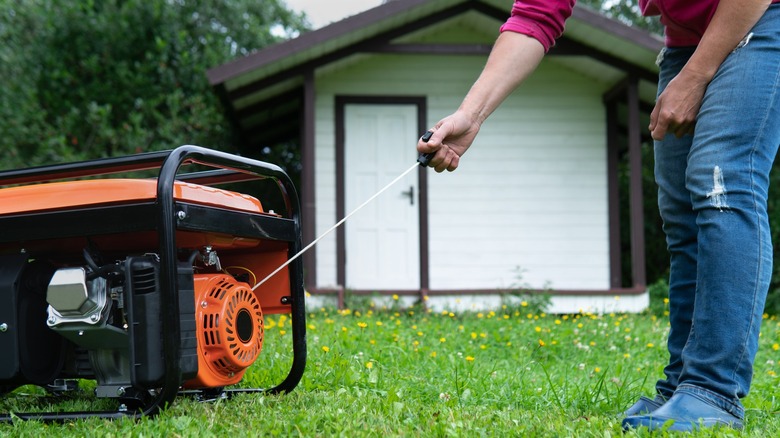
Georgy Dzyura/Shutterstock
By Ron King/
As more people adopt the RV travel lifestyle, finding a campsite that offers electrical hookups becomes increasingly difficult. This leads to exciting opportunities to take conversion vans, schoolies, motorhomes, travel trailers, and fifth-wheel campers off the grid to enjoy dry camping without any hookups. While nearly any RV can sustain basic functions for a few days with stock electrical systems, most will require some form of auxiliary electrical input when remaining off-grid for extended periods or for watching television, enjoying air conditioning, and making microwave popcorn.
Employing a quality generator is the easiest and cheapest way to supply the electrical power needed to enjoy all of your RV systems while off-grid. In addition, a generator can supply power to your home for basic needs such as refrigerators, lights, fans, and televisions in the event of a power outage.
One significant drawback to powering your electrical needs with a generator is the noise and smell associated with the gasoline-powered engines that operate them. However, modern, inverter-style generators such as 4,000-watt versions from Champion and Ryobi produce decibel levels in the range of a normal conversation when measured at distances of around 25 feet.
The Champion 4,000-watt inverter generator Model #200921
Champion Global Power Equipment’s 4,000W inverter generator, available from Tractor Supply for $479.99, uses a 224cc gasoline-powered engine that can run up to 14 hours on its 4.7-gallon gas tank when operated at or below a 50-percent load. The generator provides up to 4,000 continuous running watts and 5,000 starting watts to easily handle the peak wattage required to start 15,000 BTU RV air conditioners and compressor-style refrigerators.
The Champion 4,000W makes it easy to power your RV with its RV-ready «120V 30A (TT-30R)» outlet. The generator also provides two 20-amp 120V household outlets and a «120/240V 30A locking outlet (L14-30R)» for added versatility.
While the Champion’s compact dimensions—23.2 inches long by 18.3 inches wide and 20.2 inches tall—lend to its portability, its lack of wheels and 105-pound listed weight will make carrying it very far uncomfortable. Other features include a digital display of operating hours, voltage, and frequency, a low-oil shut-off sensor, and push-to-reset circuit breakers. The unit also comes with engine oil and an oil funnel to make first-time set-up easy.
What’s different about the Ryobi 4,000W Inverter Generator?
Among the most significant detrimental differences between the 4,000-watt inverter generators from Champion and Ryobi are price and power output. First, the Ryobi 4,000W Inverter Generator lists for $799.00, over $300 more than its competitor from Champion. Next, the 4,000W Ryobi only provides 3,400 running watts with a peak starting wattage of 4,000. While this is still enough wattage to operate most 15,000 BTU RV air conditioners, starting the AC could overload it if another high-draw appliance, such as the microwave, was running at the same time. It also lacks the Champion’s supplied oil and funnel.
On the plus side, the Ryobi 4,000W provides increased portability due to its 85-pound weight, extending handle, and «flat-free» rear wheels. While its 50-percent load run time is listed at «12+ hours,» its 212cc engine achieves that with only 3.2 gallons of gasoline. The Ryobi also provides an RV-ready 30-amp 120-volt receptacle along with four 20-amp 120-volt plug-ins, but it’s missing the 120/240V receptacle found on the Champion, which may or may not be a dealbreaker for you. Additional safety features include carbon monoxide (CO) detection shutdown and overall reduced CO emissions, although it’s still not advisable to operate any gas-powered generator indoors.